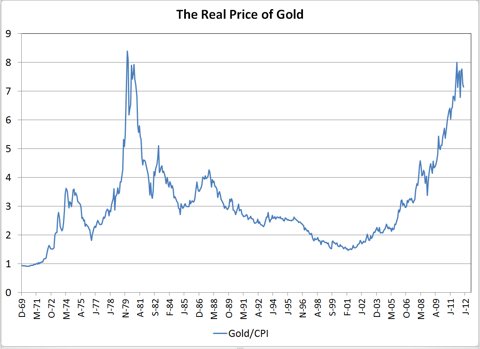The real price of gold is near the highest price it has been since the price was allowed to float in 1969. The last time gold was this high, the metal spent the next 12 years declining and did not hit bottom until it has lost 82% of its value in real terms. There is no really good reason to believe that the same exact pattern will be repeated this time, but we can be fairly certain that many of the factors that drove gold to the current heights are either unsustainable or that there exist other hedging instruments that are both cheaper and more effective. Gold might still go higher, but it is no longer a one way ticket. In the next decade, investors will need to hold a wider variety of alternative assets to hedge their traditional investments, and they will need to trade more frequently than in the past decade.
Unlike other assets, gold has no intrinsic value. We can't estimate a fair value for gold the way we can for equities or bonds because there is no income derived from it, but the metal's price gyrations can still be quantified and explained by a number of macro-economic factors. Oxford Economics produced an interesting multi-factor model that is useful for discussion. I don't particularly like the model for forecasting because I think it includes a lot of factors that are not independent of each other, which introduces serious distortions, and it includes a lot of dummy variables that seem more convenient to the modeler than to the forecaster, but it is useful for starting the discussion because it includes practically everything. Details are available at Oxford Economics. The main drivers in their model include:
- Inflation
- The US Broad Exchange Rate
- Real Interest Rates
- Credit Default Premium
- Growth
